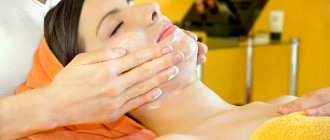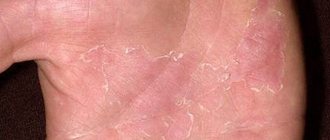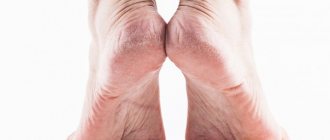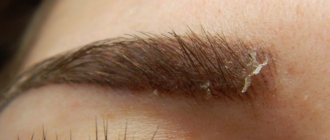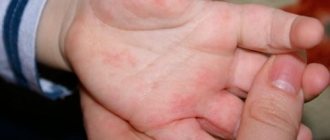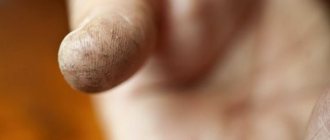Causes
The palms and fingers are covered with very thin skin, which has practically no sebaceous glands. In addition, the epidermal layer contains very little fluid. These factors lead to the fact that, with any negative impact, the skin on the hands dries out and begins to peel.
In most cases, the reasons that cause itching, dryness and flaking are quite commonplace. After eliminating them, your hands look healthy and well-groomed again. These include:
- frequent use of soap with antibacterial or deodorizing components;
- drying your hands with a towel that is too hard and scratches your skin;
- using household chemicals without protective gloves;
- incorrect selection of cosmetics for care;
- mechanical damage - scratches, abrasions, wounds;
- prolonged exposure of fingers and palms to water, most often associated with professional activities.
In addition, the skin on the hands can peel off under the influence of atmospheric factors - frost, wind, sun rays. The epidermis can also react to frequent changes in temperature with dryness and the appearance of cracks.
All of the above reasons are easily removable, but there are factors that are more difficult to get rid of. These include:
- genetic predisposition, inherited;
- hormonal disruptions in the body (in adolescence, during pregnancy, during menopause);
- metabolic disease;
- lack of vitamins or other nutrients;
- long-term use of medications, especially antibiotics and corticosteroids;
- improper diet and diet.
One of the reasons for dry and flaky skin on the hands or feet is smoking and other bad habits.
The skin can dry out, peel and crack due to many diseases, among which the most common are:
- Ichthyosis is a genetic pathology in which the skin on the torso and arms thickens, becoming covered with small scales that resemble fish scales.
- Psoriasis is an autoimmune pathology when bright pink spots covered with scales appear on the torso, feet and palms.
- Atopic dermatitis is an allergic disease, one of the symptoms of which is peeling of the skin.
- Dyshidrosis - small vesicles with fluid form between the fingers or toes. They burst, causing severe itching and the appearance of scales.
- Scarlet fever is an infectious disease in which, on days 5-6, peeling of the skin on the palms and fingers begins and large areas of the epidermis are rejected.
- Eczema is weeping lesions that form on the body, neck, arms and legs, dry out and peel over time.
- Scabies. The causative agent of this disease, the scabies mite, is localized in the interdigital area on the hands, resulting in the formation of convex nodules that itch and peel.
- Syphilis. A secondary sign of the disease is redness on the palms, dryness and the appearance of scales.
The skin on your fingers, hands and palms can dry out and peel if you get a fungal infection. Most often this occurs with pityriasis versicolor and lichen planus, dermatomycosis, and onychomycosis. An advanced fungus is difficult to treat, so it is important to diagnose this disease as early as possible.
The skin can peel off not only in adults, but also in children. In most cases, the cause of dryness in babies is a lack of vitamins, allergies, exposure to wind and cold, and bacterial infections .
A pediatric dermatologist can determine the cause and help eliminate it.
What is skin peeling, the mechanism of its development
The skin is an organ whose tissues consist of several layers, which include the dermis (the skin itself) and the surface layer - the epidermis. On the surface of the epidermis there is a layer of dead epithelial cells (stratum corneum), which serves the function of protecting deep-lying epithelial cells from adverse environmental factors. When exposed to various pathological processes, the intensity of death of epidermal cells increases, which leads to an increase in the thickness of the stratum corneum and the development of desquamation. The skin of the palms and plantar surface of the feet has a more developed stratum corneum, so peeling in this localization develops more often than in other areas of the body.
Symptoms
It is impossible not to notice when your fingers are peeling. However, often even before the formation of scales, signs appear that are worth paying attention to:
- the skin loses elasticity and begins to dry out;
- noticeable irritation and redness;
- formation of small cracks;
- feeling of skin tightness;
- itching and mild burning.
Hands look aged, wrinkled and unkempt. If measures are not taken in time, the skin becomes very dry and begins to peel.
Treatment
Many men do not pay attention to dry and flaky skin on their hands. But this causes a lot of trouble for women, so they try to take all measures to eliminate these symptoms.
Before starting treatment, it is necessary to find out the reason for the drying out of the epidermal layer. To do this, it is best to make an appointment with a dermatologist.
When peeling is caused by a dermatological disease, the doctor will give a referral for additional examination, after which he will determine treatment methods. Thus, for fungal infections, complex therapy is considered the most effective, including the following measures:
- The use of external ointments or creams - Exoderil, Pimafucin, Lotseril, Mikoderil, Triderm. They are applied to the back of the hand, palm and each finger 2 times a day, thoroughly rubbing into the surface.
- Taking medications for internal use - Orungamine, Nystatin, Itraconazole.
- The use of folk remedies - soda baths, apple cider vinegar compresses, lotions from a decoction of celandine and string.
If the cause of peeling skin on the arms or legs is vitamin deficiency, the doctor will prescribe complex vitamin preparations: Multitabs, Complivit, Perfectil, Duovit, Supradin. In addition, it will be necessary to review the diet and include foods rich in substances that have a beneficial effect on the skin.
These include:
- nuts - walnuts, cashews, almonds;
- flaxseed oil or flaxseed flour;
- vegetables - carrots, broccoli, spinach;
- fatty fish - tuna, salmon, cod;
- fruits - citrus fruits, apples, grapes.
It is recommended to drink at least 2 liters of liquid per day. In this case, preference should be given to mineral water, juices and green tea and limit the consumption of coffee and alcohol.
If dry fingers and palms are caused not by a disease, but by external factors (frost, sun, cosmetics), then you can get rid of it at home using folk recipes.
The most popular are:
- Combine 50 g of melted goose or pork fat with the yolk and 1 tablespoon of lemon juice. Apply the mixture in a thick layer to your hands, leave for 5-10 minutes to absorb, then put on plastic gloves overnight.
- Heat a glass of linseed, olive or corn oil in a water bath to a temperature of 40 0C. Add 1 tablespoon of honey and 5-7 drops of rosemary, tea tree, and lavender essential oils. Place your hands in the oil and hold for at least 20 minutes, then pat dry with a napkin.
- Boil 3 large unpeeled potatoes, peel and mash. Pour in 50 g of cream and 3 tablespoons of olive oil, stir. Apply the mixture to your hands, put on first plastic and then fabric gloves. Leave until completely cool, then wipe with a towel and apply nourishing cream.
- Pour 50 g of oatmeal with 1 glass of milk and microwave for 3 minutes. Add 3 tablespoons of vegetable oil and the yolk of one egg. Use for compresses or applications, immersing hands for 20-30 minutes.
- Combine 4 tablespoons of honey with 2 tablespoons of olive oil and 1 teaspoon of lemon juice. Smear your hands every evening at night, then put on medical gloves.
For dry and flaky skin on your hands, it is recommended to do oil wraps at night . To do this, thin fabric gloves need to be dipped in olive, linseed, burdock or any other vegetable oil heated to 40°C, squeezed lightly and put on your hands. To avoid staining the bed linen, rubber gloves are needed over fabric ones.
What to do if peeling appears?
In order to understand why the skin on your legs is dry, flaky and accompanied by subjective sensations in the form of itching, you should consult a dermatologist. After examining and questioning the patient regarding the time of occurrence of such manifestations, the specialist will prescribe an additional study. It includes laboratory and instrumental diagnostics, which makes it possible to objectively determine the cause of the disease. Based on the established diagnosis, etiotropic therapy is prescribed.
Depending on the cause of peeling, it may include antihistamines (anti-allergic), anti-inflammatory, antibacterial or antifungal drugs for local (ointment, cream) or systemic (tablets, injections) use. If a pathology of the organs of the digestive system is detected, it must be treated. Regardless of the cause of peeling skin, the doctor recommends a diet that includes plant foods with sufficient fiber and vitamins.
Self-treatment or the use of various folk remedies can lead to aggravation of the pathological process and the development of various complications.
Prevention
In order for your hands to always look well-groomed and beautiful, you need to take care of them not from time to time, but daily.
You can prevent drying and flaking of the skin by taking the following preventive measures:
- Use only high-quality cosmetics that are suitable for your age and skin type. Try to buy creams that contain natural ingredients and do not use them after the expiration date.
- During the cold season, be sure to wear mittens or gloves outside.
- When performing household work, especially when in contact with aggressive substances, wear protective gloves.
- In summer, use hand creams with protective UV filters.
- Do not go outside with wet hands, especially in the cold season. Carefully remove moisture between your fingers.
- Massage your hands regularly, kneading and rubbing each finger to increase blood circulation.
- Wash your hands with warm water and moisturizing and softening soap. Do not rub with a hard towel, but blot with soft tissue napkins.
- Exfoliate dead cells using scrubs.
- Make hand baths using herbal infusions and essential oils.
If, despite all the measures taken, the skin on your hands continues to peel, you should definitely consult a dermatologist. It is possible that the reason lies in some chronic disease that needs to be diagnosed and treated. Then the skin on your hands will again have a healthy and blooming appearance.
Using paraffin therapy to restore hand skin
Paraffin treatments have a very beneficial effect on restoring the water balance of the skin of the hands, eliminate flaking and successfully treat the driest and roughest skin.
They are successfully used both in beauty salons and at home. Cleansed hand skin is covered with nourishing cream. Then, sequentially, 4 times the hands are lowered into a bath of heated paraffin. After this, plastic bags are put on the hands with frozen paraffin and wrapped in a terry towel. Paraffin retains the warmth of the skin for a long time, the pores open, and impurities and toxins come out through them. After cooling the paraffin, all unnecessary substances remain on it, the resulting moisture is actively absorbed by the skin inside. Paraffin masks help improve skin elasticity and deep cleansing, improve nutrition and appearance.
Beautiful and well-groomed hands for any woman are an indicator of her health. By caring for the skin of your hands, preventing it from flaking and dryness, you prolong your youth. Patient and careful care will help relieve your skin of many problems. Be healthy and beautiful!
